How To Make Substitutions in Recipes
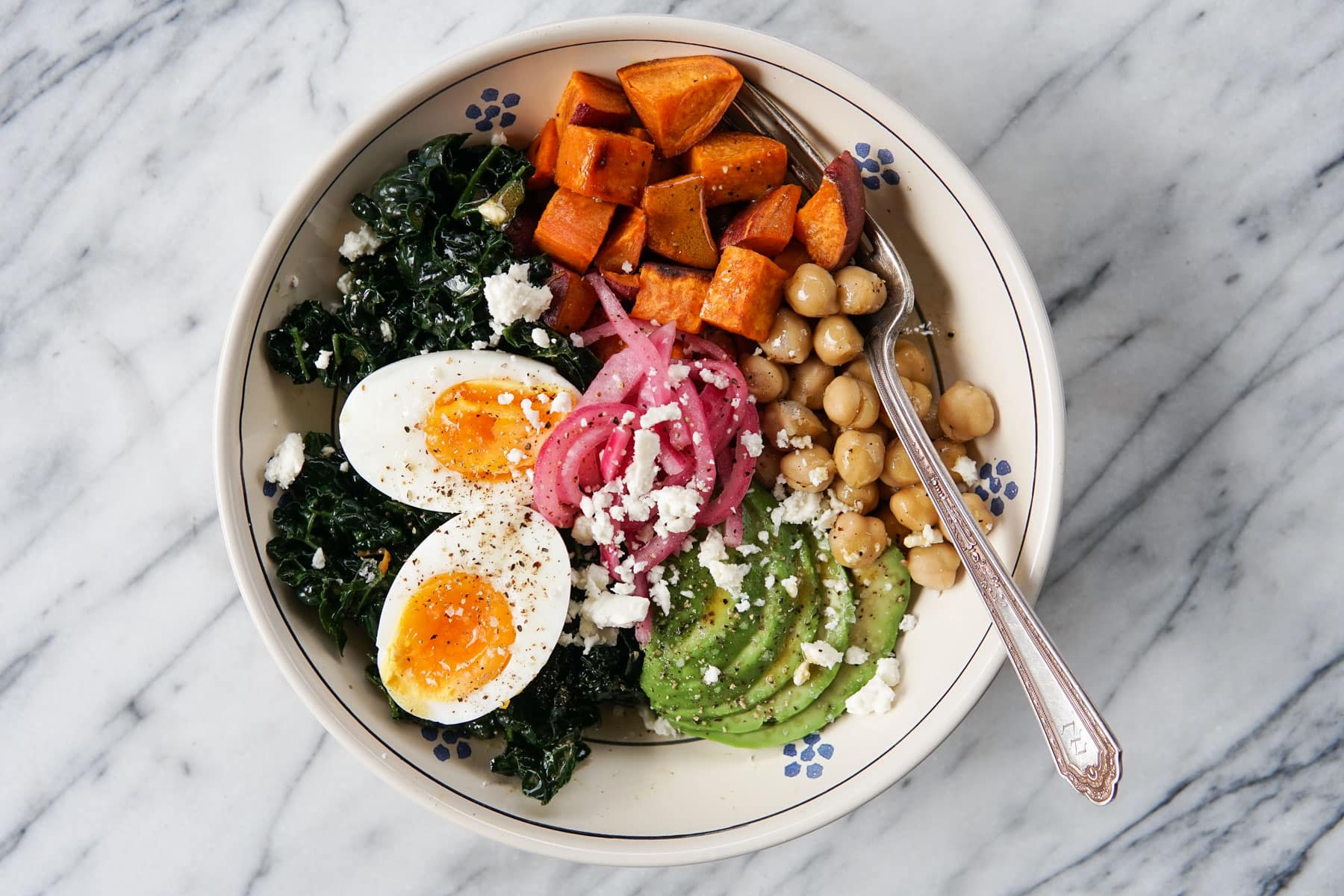
Quarantine and COVID restrictions have really forced a lot of us to learn how to improvise based on what we can find at the grocery stores and in our own kitchens. Being able to create a meal with whatever ingredients are in front of you is a skill that will save you time, money, stress […]
Quarantine and COVID restrictions have really forced a lot of us to learn how to improvise based on what we can find at the grocery stores and in our own kitchens. Being able to create a meal with whatever ingredients are in front of you is a skill that will save you time, money, stress […]
Being able to create a meal with whatever ingredients are in front of you is a skill that will save you time, money, and stress and make you a more confident cook. When it comes to recipes, it’s more important to learn the technique or formula behind the recipe than the actual recipe itself. That way, you can apply those techniques and formulas with different ingredients. Soon you’ll realize how fun and flexible cooking can actually be!
At the end of each recipe, I always include a list of substitutions so that you can all see how easy it is to adapt the recipe based on what you like or what you have on hand. It’s important to remember that you don’t have to follow recipes to a tee! Don’t feel like you can’t make a recipe because you’re missing one or two ingredients or if there’s an ingredient you dislike. You can bend the rules in most recipes and still have a delicious result. I’m seeing lots of members in the Facebook group doing just that, which is amazing!
How to make substitutions in a recipe
If a recipe calls for an ingredient that you don’t have, ask yourself these two questions:
- What is the purpose(s) of that ingredient? Is it adding crunch? Is it adding creaminess? A certain flavor? Umami? Heat? Acid? Fat? Salt? Nuttiness? Freshness? Etc…
- What else could I use to accomplish the same purpose(s)? What else is crunchy? What has a similar flavor? What other acid could I use? Could I use a different vegetable?
Now let’s talk about all of the purposes for ingredients…
Vegetables
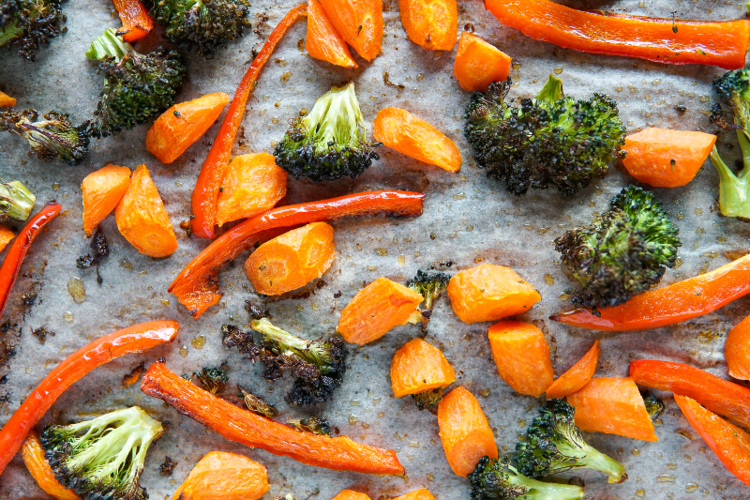
Vegetables are so adaptable and interchangeable. The purpose/role a vegetable plays in a meal depends on the vegetable and how it’s cooked. If a recipe uses a vegetable you don’t like, then use a different one. If you have vegetables you want to use up, just use those ones. You just want to consider the cooking time of each vegetable. Here are the ones I commonly swap:
- Potatoes, sweet potatoes, carrots, beets, turnips, parsnips, winter squash, cauliflower
- Bell peppers, cabbage, fennel
- Cauliflower, broccoli, brussels sprouts
- Green beans, zucchini, green peas, asparagus
- Kale, spinach, swiss chard, broccoli
Crunchy things
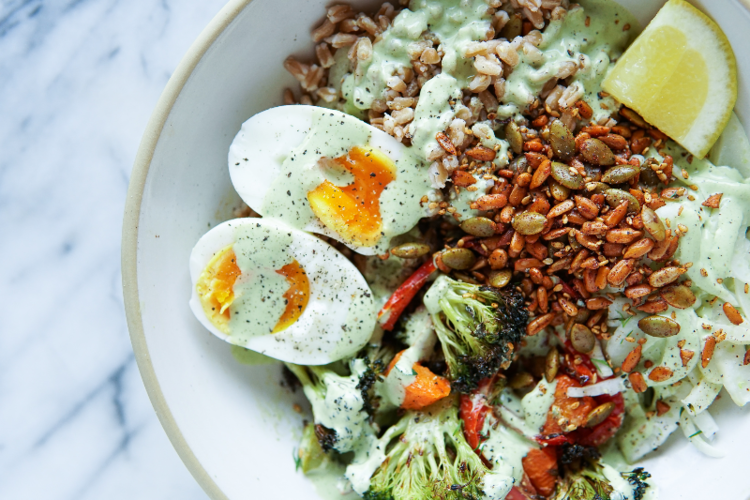
If a recipe has nuts on top to add crunch and richness, but you don’t have them or you’re allergic, then think of what else you have that could have that same function. It could be a seed or a different nut OR it could be just some crunchy vegetables chopped up into small pieces and sprinkled on top. Since raw vegetables don’t have that same richness and fat content, drizzle some olive oil on top.
My favorite crunchy toppers:
- Toasted nuts and seeds
- Raw or pickled crunchy vegetables (carrots, cucumber, cabbage, onion, celery, fennel, etc…)
- Raw crunchy fruit
- Toasted bread/breadcrumbs/croutons
Creamy and fatty things
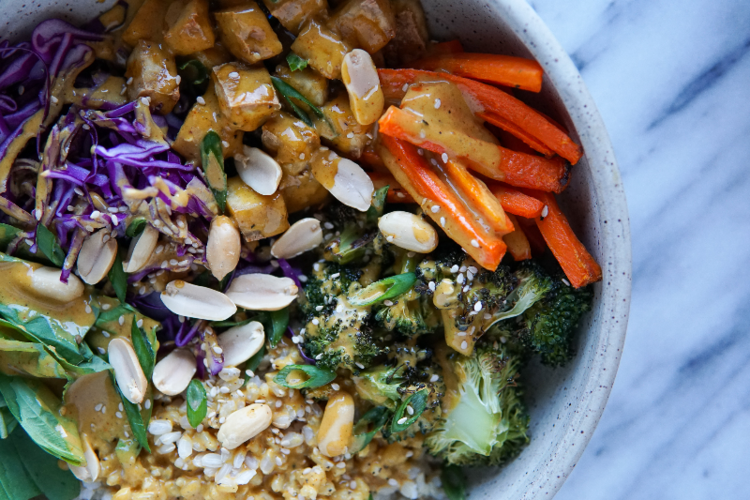
Adding a creamy, fatty element to a recipe can balance out anything acidic and salty. I also love the combo of creamy and crunchy textures in my mouth (raw and cooked veggie combo!). So if a recipe calls for yogurt on top but you don’t eat dairy, what is that yogurt doing? It’s adding creaminess and tang/acid to the recipe. So instead, top with some avocado and a squeeze of lime or lemon (or guac!), or make a lemon tahini sauce.
Here are my favorite creamy and fatty things:
- Avocado
- Egg yolks
- Roasted root veggies (creamy texture)
- Yogurt
- Creamy sauces/dressings
- Nuts/seeds and nut/seed butter
Acidic and bright things
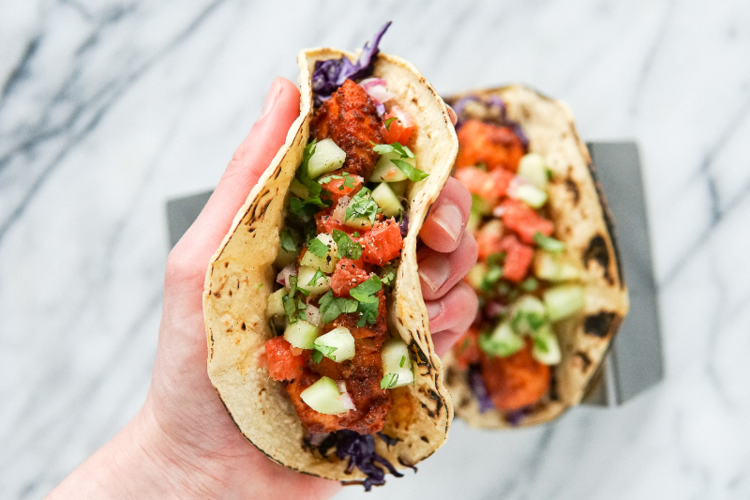
Acid is a key component in all recipes. Without that balance of salt, fat and acid, a dish can taste bland or like it’s missing something (often it’s just missing acid or salt). So if a recipe calls for lemon, think about what that lemon is doing. Perhaps you’re tossing it with some fennel to pickle it. You could instead use lime or vinegar to accomplish that same goal.
Here are my favorite ways to add acid:
- Citrus: adding a squeeze of fresh lemon or lime to any meal is sure to brighten up the dish.
- Pickled vegetables: thinly slice raw vegetables (fennel, carrot, cucumber, radish, beets, celery) tossed with lemon, lime, or vinegar and salt creates a tangy, crunchy, salty bright topping (see “how-to pickle any veg” video).
- Yogurt: since yogurt is fermented, it has a natural tangy brightness that can really liven up a meal.
- Acidic dressings: apple cider vinegar or lemony dressings are my go-to.
Umami things
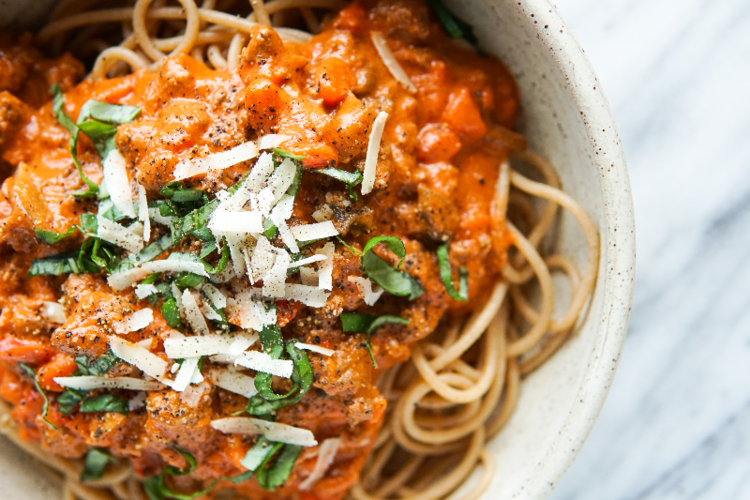
Umami is that deeply savory flavor that you get from browning meats, but is also found in many other common ingredients:
- Soy sauce
- Fish sauce
- Tomato paste
- Mushrooms
- Miso paste
- Parmesan cheese
So, if a soup uses miso paste, it’s there to add that salty, umami-rich flavor. Try substitution with equal amounts of soy sauce. If a pesto recipe calls for Parmesan cheese, easily substitute miso paste to get a similar nutty, salty, umami-rich flavor.
If you’re adapting a recipe with meat to be vegetarian, think about how to incorporate the above ingredients to add that umami flavor you lose with meat.
Spicy or spiced things
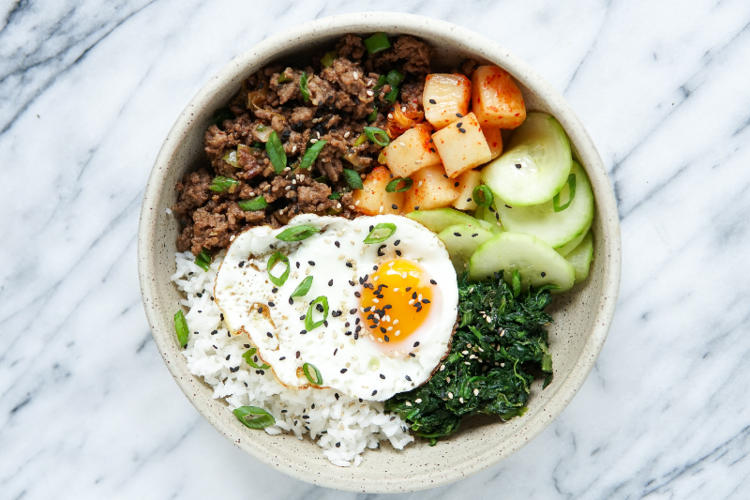
So if a recipe has something spicy and you don’t like spice, then just leave it out. If it calls for a certain spicy pepper, use a different one. If it’s something like a blended sauce, soup, or stew, you could also just add red pepper flakes for that spicy heat.
When it comes to spices, you can also easily substitute them based on what you have and like. Mix and match different spice combinations and have fun with it! These are spices you can often use interchangeably, but feel free to mix and match:
- Cumin, coriander, smoked paprika
- Oregano, thyme, fennel
- Cinnamon, ginger, turmeric, allspice
Salty things

Salt is a key component, if not the most important component, in a meal. If you are looking to swap out a salty ingredient, make sure you are substituting something salty or add more salt.
Here are my favorite forms of salt:
- Salt
- Soy sauce
- Fish sauce
- Olives
- Feta and parmesan
- Pickled vegetables
So, if you are making a salad or a bowl and you are told to top it with feta or Parmesan but you don’t eat dairy, top it instead with olives or some pickled veggies. If nothing else, garnish with a generous sprinkling of salt.
Check out my “Salt 101” blog post and find out the best salt to cook with!
Nutty things

I love nuts and all nutty things. It’s that rich toasty flavor that is so addicting! So if you’re swapping out nuts, use toasted seeds instead or add some parmesan or other nutty cheese for that nutty flavor in addition to something crunchy, like a crunchy raw vegetable.
My favorite nutty things:
- Toasted nuts and seeds
- Parmesan cheese
- Aged gouda cheese
- Whole grains
Fresh things

When I think fresh, I think fresh herbs. As you all probably know by now, I love adding fresh herbs to pretty much everything. What I love about herbs is how flexible they are. If a recipe calls for parsley and you have a bunch of cilantro you need to use, just use cilantro. At the end of the day, herbs are there to add freshness and any herb is better than none.
Here are the best herb swaps:
- Cilantro, mint, basil and scallions are pretty interchangeable in Asian-style meals
- Cilantro and scallions for Mexican-style meals
- Parsley, cilantro, and dill for Mediterranean-style meals
- Rosemary, thyme, tarragon, sage – these herbs are tougher and usually used to infuse flavor.
Check out my post all about herbs and learn the best way to store them!
Let’s talk about some Cooking Club examples:
Beet Yogurt Sauce from Week 8
Beets aren’t for everyone, so if you see this recipe and think “no way I’m making that!”, instead think, “what could I use instead of beets?”. The beets add a bright color and slightly sweet roasted root vegetable flavor. What other root vegetables could I roast and blend in here? Carrots! Winter squash! So instead of beets, you just add in a cup or so of roasted carrots. Since carrots have less water content, you may need to add some extra liquid to thin the sauce out.
Sheet-Pan Moroccan Chicken and Veggies from Week 7
This recipe uses carrots and cauliflower, but you could pretty much use any vegetable you want here. I saw members adding broccoli and zucchini! Just make sure if you’re roasting a vegetable that cooks a lot faster with a root vegetable that takes longer, cut that root vegetable into much smaller pieces so they cook at a similar rate.
Cucumber Orange Salsa from Week 2
Here’s an example of a recipe you could totally change and make your own. The cucumber adds crunch, while the orange adds sweetness and juiciness. Instead of cucumber, use fennel, radish, or bell pepper. Instead of orange, use mango, pineapple, strawberry, or watermelon – literally any fruit that is ripe and in season.
Shaved Brussels Sprout Kale Spaghetti with Toasted Hazelnuts + Garlic from Week 4
Here’s an example of a recipe you could adapt super easily. You could pretty much sub any vegetable you wanted here, just make sure it is thinly sliced or cut into small pieces. Here are some other options:
- Cauliflower and kale
- Fennel and kale
- Bell pepper and kale
- Broccoli and spinach
Nut allergy? No problem, use something else crunchy and garlicky. Toast up some pumpkin seeds with garlic or some bread crumbs toasted in butter with garlic.
Summary
So I hoped you learned a little something and feel more comfortable making swaps in recipes. Just remember to ask yourself these two questions:
- What purpose does this ingredient have?
- What other ingredients or combination of ingredients would achieve that same purpose?
As always, be sure to ask any questions about swaps and substations in the Facebook group!


leave your comments!